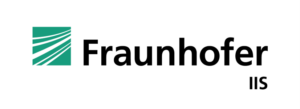Within the GAIA-X network, Germany’s national project Team-X has selected two use cases to develop prototypes for the practical application of a secure data ecosystem. The first use case is centered around inpatient and outpatient care for the elderly, integrating an innovative “Digital Care Platform” through data- and care-related interfaces. The second use case, “Women’s health”, aims to enhance breast cancer care across disciplines by providing a comprehensive tool that facilitates the communication between patients, physicians, and health care providers. This use case covers the entire course of the disease, from inpatient to outpatient care, and ensures Gaia-X compliant data collection, storage, and sharing (read more on the issue of storing sensitive patient data and Gaia-X’ approach towards it).
As one of the consortium partners of Team-X, the Fraunhofer IIS Mobile Health Lab collaborates closely with the University Hospital Erlangen, another partner within the consortium. In light of Breast Cancer Awareness Month, I had the opportunity to speak with PD Dr. Sebastian Bickelhaupt, an Attending Physician in Radiology and member of the interdisciplinary Team-X project team, about breast cancer care as a highly relevant use case for Team-X.
What makes breast cancer care a highly relevant use case for Team-X?
Sebastian Bickelhaupt: Breast cancer is the most frequent cancer in women, leading to a large population of patients undergoing treatment. With therapies being more personalized, some of those given orally and lasting for several years, compliance is a critical aspect for successful cancer therapy. Thus, as one use-case, TEAM-X aims to support and facilitate therapy compliance by developing digital technologies that enable a seamless and secure communication between medical care professionals and the patients.
Can you outline your team’s specific task and your vision for the Team-X project, particularly in comparison to the current state of breast cancer care?
In order to augment the care of patients by digital applications, an intuitive and safe exchange of medical data is necessary. This involves not only technically sharing interdisciplinary medical data, but also providing an understandable and clear communication with the treating medical care professionals. This may include the remote answering of specific medical questions, for example, or reporting potential treatment side effects that require the attention of medical care professionals. To develop a secure communication tool, TEAM-X is focusing on the use of Gaia-X compliant data exchanges to overcome existing communication obstacles in breast cancer treatment. This has the potential to support therapy compliance and ultimately benefit the individual treatment outcome.
Every year, October is dedicated to breast cancer awareness, symbolized by a pink ribbon. Breast cancer is the most common cancer among women. Breast cancer mortality rates have been reduced thanks to effective treatments and early detection programs. However, they vary across countries and regions, depending largely on the respective health system and access to treatment and early detection programs.
What are the advantages or benefits for breast cancer patients?
With the technical foundation developed in the TEAM-X project, patients in the future might be able to receive hands-on mobile, personalized, and quick communication with healthcare professionals. This might reduce the need to schedule in-person visits to receive qualified feedback on some of the individual medical questions – and all of this while ensuring data sovereignty. It shall enable patients to have control over which specific medical data they want to share with which institutions and to keep track on the current state of their shared data. This approach could potentially further support doctors in monitoring and adjusting treatments, medication, or general patient conditions, enabling the best possible care for the individual patient.
What are the key aspects that need to be addressed for a successful integration of the Team-X communication tool into hospital routine?
There are several aspects that need to be addressed for a successful integration of such a tool. Firstly, the technical development teams in TEAM-X must create an application that ensures data security and integrity, aligning with the principles of the Gaia-X technologies. Secondly, the tool needs to be easily and intuitively usable tool, convenient to be used by both patients and physicians.
Thank you, Sebastian, for sharing these valuable insights. Best of luck with your endeavors in improving breast cancer care. I look forward to our future discussions!
Image copyright: Adobe Stock







Add comment